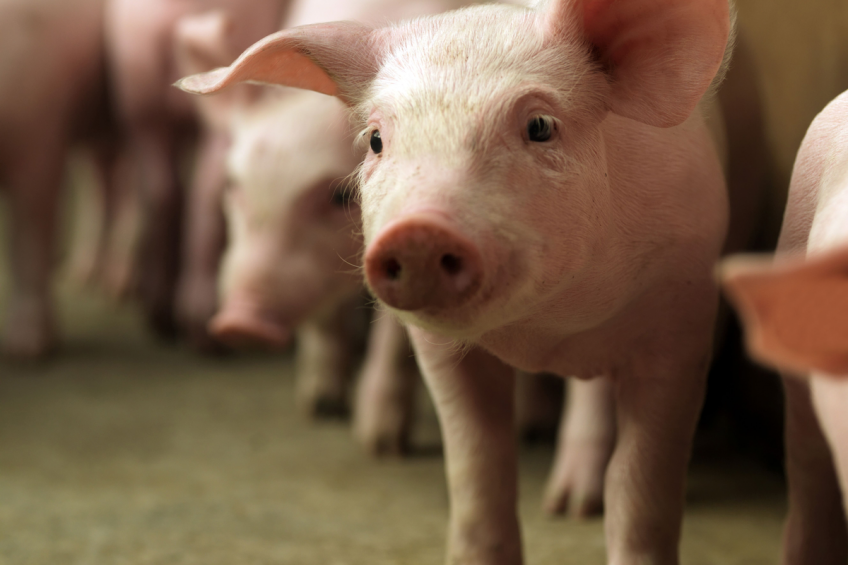Tackling oxidative stress in pigs

Oxidative stress brings with it a host of problems that affect productivity in both the breeding and rearing systems. Producers can look at new ways of dealing with this and using alternative antioxidants that have been shown to enhance performance.
By Jorn Marsden, Cargill
Oxidation takes place in all living organisms. The rate of oxidation increases as metabolism increases. Modern high-performance swine production systems are no exception where very high levels of oxidation are occurring. As a consequence of this activity, highly reactive molecules are produced and these are known as free radicals.
Oxidative stress results from the enhanced burden and pressure on the body cells and tissue. In other words, more free radicals are produced and these free radical can damage the body tissue. Free radicals are very aggressive atoms, which steal oxygen atoms from other molecules, leading to oxidative stress. The more free radicals the larger the pressure on the body.
Free radicals are a natural metabolite from the normal metabolism, but if the concentration of the free radicals gets too high they will start to break down cells, which can lead to increased disease pressure. So if the concentration of free radicals is higher than the concentration of antioxidants, then the body will experience oxidative stress.
Drop in performance
A drop in performance can indicate oxidative stress. Symptoms such decreased immunity, muscle degeneration, increased risk of stroke in fast growing pigs, Mulberry Heart Disease, loss of appetite, diarrhoea and destruction of liver tissue might be seen. The risk of abortions in gestation sows can be caused by oxidative stress.
A fall in performance caused by oxidative stress might typically be regarded as a vitamin E deficiency, but it is actually a lack of antioxidants. Although vitamin E is an antioxidant, there are alternatives that help prevent oxidative stress.
Figure 1 shows the commonly known antioxidants in swine diets; vitamin E, C and selenium. They have typically been the cheapest options when tackling oxidative stress problems. The downside of using these antioxidants is that an increased content will most likely create an imbalance in the total diet, due to the fact that both vitamin E, vitamin C and selenium have synergisms as well as antagonisms modes of actions due to other vitamins, and thereby adding extra will solve one problem but create another one.
We now know that essential oils and herb extracts are well known as having anti-oxidative effects and they have been used successfully in swine diets. Under this umbrella, it is interesting to look into the possible role of flavonoids, found in various plant extracts. More than 6,500 different types of flavonoids are now known.
Flavonoids are the component in plants that give the plant its colour and protect it from UV-light. The bioavailability of flavonoids is very different between plant extracts and it has taken a great deal of work to screen and determine which compound of flavonoids has the potential to increase the anti-oxidative capacity in the animal.
Imbalance
Using a natural antioxidant or a combination of several natural anti-oxidative components to prevent metabolic stress has a great advantage in that it avoids the imbalance within vitamin levels.
The proven mode of action of the flavonoids is illustrated in Figure 2 and varies from that of vitamin E. Vitamin E and flavonoids are both antioxidants. However, vitamin E is fat-soluble and flavonoids are water-soluble. After catching free radicals both vitamin E (tocopherol) and flavonoids (polyphenols) are loaded, or oxylated.
GSH, which is glutation produced in the body using selenium, helps regenerate both vitamin E and flavonoids then flavonoids can help regenerate vitamin E. After regeneration vitamin E and flavonoids can be used again to catch free radicals.
Heightened risks of oxidative stress
Immediately post-harvest the enzyme activity in the grain is high and the content of free radicals increases which will increase the risk of oxidative stress in the animal if additional antioxidants are not added to the feed.
In a wet growing season there will be the additional risk of mycotoxins. These mycotoxins will use antioxidants too so more may need to be added in this period. Mulberry Heart Disease, or sudden death, can be linked to anti-oxidative stress. Fast growing pigs are the most vulnerable. Any increased risk can be easily solved by adding 50-100 ppm of the flavoid alfa-tocopherols or alternative anti-oxidative components at the recommended dosage.
Research and trial work has shown that the role of antioxidants can be improved cost-effectively above that achieved by adding additional vitamin E. An example is Cargill’s natural anti-oxidative flavonoid ProviOx that has high bioavailability and has been shown to be a more cost-effective solution than vitamin E. Results, shown in Table 1, indicate that it can effectively replace parts of vitamin E and also give a positive effect on meat quality.
As swine production systems continue to improve and perform at a high level the risks of oxidative stress will continue. So producers should look at the best and most cost-effective ways of tackling this and look at the alternatives that may be more effective, more cost-effective and have productivity benefits too.











